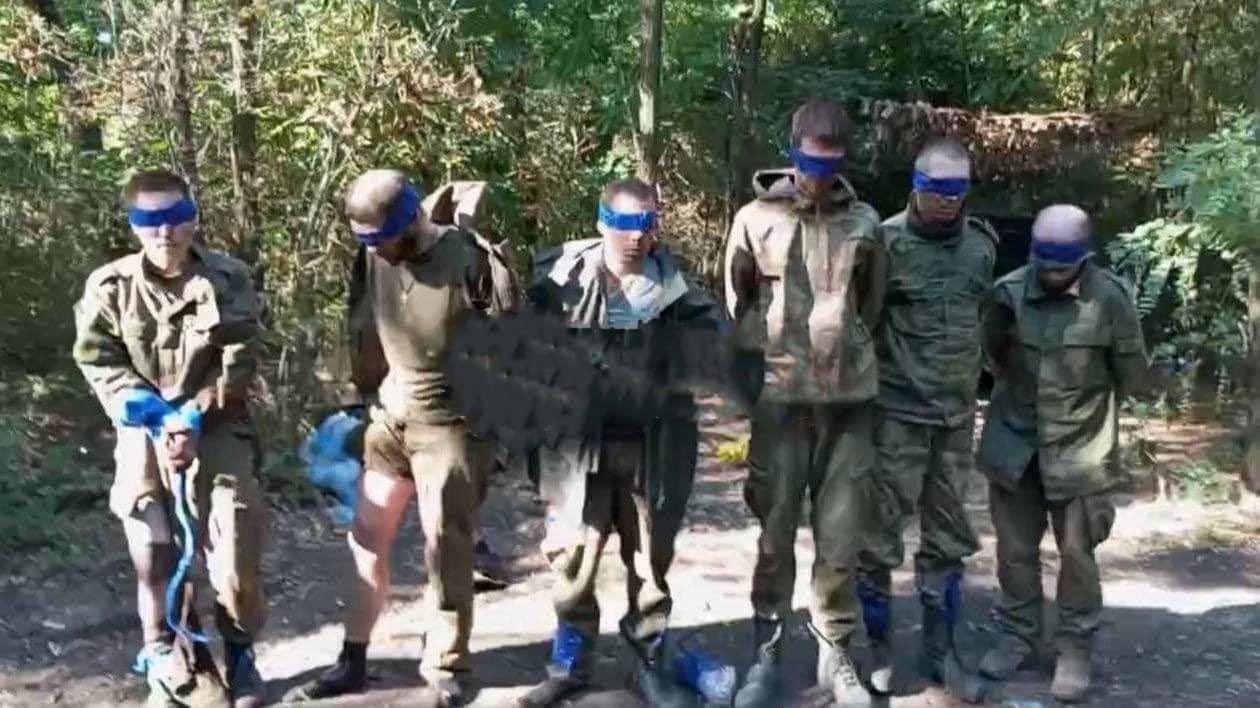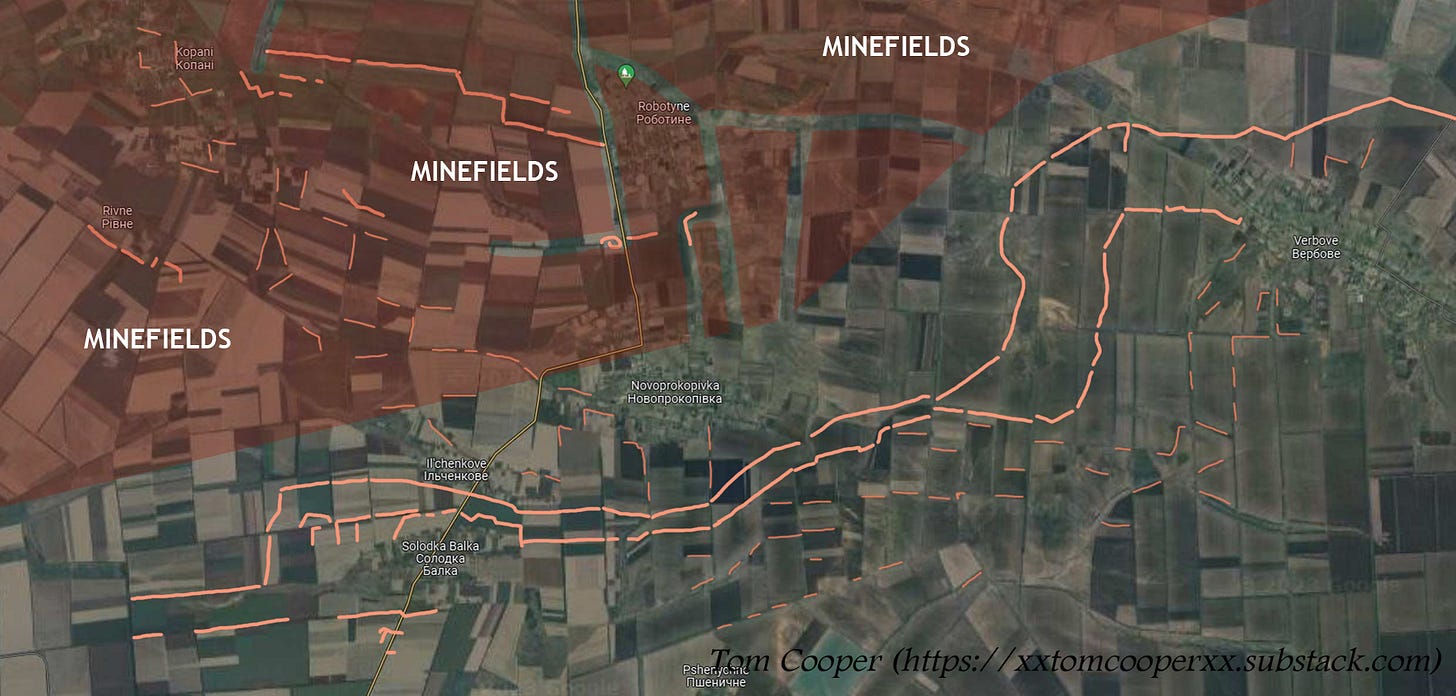Hello everybody!
I’ve got an extremely busy week, so ‘a little bit’ on developments on the frontline in ‘telegraphic’ fashion:
- On 17 September, the Russians released 6 Shaheds and 6 cruise missiles: all were claimed as shot down by the PSU.
- On 18 September, the Russians released 24 Shaheds and 17 cruise missiles: 18 Shaheds and 17 cruise missiles were claimed shot down by the PSU.
- On 19 September, the Russians released 30 Shaheds, 27 were claimed as shot down.
- Generally, there seems to be something like a ‘break’ in major operations; lots of talk about ‘consolidation’ of positions, and reorganisation of units. This is ‘natural’ after all the high-intensity operations of the last 2 weeks, not to talk about the last 3,5 months.
- Still, the ZSU is continuing some offensive operations, for example in the Novoselivske area (western Luhansk), east of Andriivka (Bakhmut), in south-western Donetsk and southern Zaporizhzhya (eastern Novoprokopivka).
- It turns out that except for the 72nd MRB, the Russians also lost nearly all of the 31st and 83rd VDV Brigades. Certain is: commander of the 31st was killed in that battle, while one of former commanders of the 72nd appeared in the social media to complain the unit was left without ammunition and supplies during the fighting and is non-existent now - ‘except on paper’.
If this with the loss of three brigades in the Bakhmut area alone is truth, the Russians there are in big trouble. Because:
having 1 _trained_ VSRF- and 2 VDV _trained_ brigades in the same sector = defence line, but
replace 3 destroyed units with 3 units of barely-trained mobiks = recipe for a disaster.
No wonder then, RUMINT has it Gerasimov has locked himself into ‘writing a book’, and is rarely seen in the GenStab in Moscow, lately: in his place, I would be desperate.
Why?
Because, well, Ukrainian offensive might not be advancing by ‘hundreds of kilometres’, but it’s extremely effective in mauling what’s left of the Russian armed forces. So much so, Pudding and his Keystone Cops in Moscow meanwhile have no strategic options left. Their troops are demolished and trained reserves spent to the level where they can’t even run a local offensive operation any more: they can only refill the ranks, and have these shot away in droves again…
BTW, gauging by videos released over the last few days, the number of captured Russian troops is constantly growing. No, it’s not ‘massive’ (yet). But, still: it’s growing. Think to have seen some 7-8 different groups - yes: entire groups - of prisoners of war being processed by the ZSU, the last few days. Sure, many are from the 72nd MRB, and some were mobiks, but: there are lots of VDV troops - and they were not only captured in the Andriivka area (i.e. Bakhmut sector), but also in the Novoprokopivka-Verbove area (southern Zaporizhzhya).
‘For the end’ today, one more observation regarding war-maps circulated around the social media. When it comes to the situations in southern Zaporizhzhya an south-western Donetsk, most of drawers seem to remain ‘obsessed’ with the Russian double anti-tank ditch.
This is still (mis)declared into the Russian ‘1st Defence Line’, and thus the Ukrainian advance is gauged by how much of those two ditches the ZSU controls….or not.
Once again: that’s completely wrong. Yes, there are these two big anti-tank ditches. They are easy to find on satellite maps and thus attracting most attention.
….or, actually: distracting….
What’s actually making the Russian defence line are
- A) minefields, and
- B) dozens and hundreds of field fortifications.
For B, see: foxholes, trenches, trench complexes, entire ‘forts’ of trenches, some of these underground. Most of them ‘combined’ (or ‘protected’) by yet more mines.
Which means that, even once they are ‘south’ of the huge Russian minefield - like in the area between Robotyne and Verbove - Ukrainian troops are still running into additional, smaller minefields, whenever trying to reach the Russian positions.
And there are dozens and hundreds of these between Kopani and Verbove alone (enough to ‘bury’ something like three Russian divisions), and the mass of them is concealed in, de-facto, every single hedgerow. And many are protected by additional, smaller minefields. Means: once Ukrainians secure one hedgerow, they have to advance along the next one, clear the mines, assault and destroy the Russians there - and that in order to reach the next Russian position in the next hedgerow.
While the mass of such positions was constructed perpendicular to the Ukrainian axes of advance, there are many constructed in the same direction. This in turn means that Ukrainians frequently have to ‘stop’, and re-direct their attacks into such positions on their flanks.
Thus, what actually matters are not these two big anti-tank ditches: they were constructed to stop or slow down mechanised advances. But, they are too wide for infantry: not offering enough protection for it. Thus, the way this battle is fought since mid-June, they, actually, do not matter.
What matters instead is looking something like this:
It’s all these ‘small, irregular trenches/positions’ that are actually making the Russian line of defence.
Please mind: that map is very, very ‘rough’. Sorry, but by best will: I simply have not enough data to draw every single Russian trench.
(Ah yes and: the ‘roads thorugh the minefields in the north’ are approximate positions of ‘safe lanes’ cleared by the ZSU. In that case, I’ve got no problem to admit: wouldn’t go into ‘more details’ even if I would have them.)






Thanks again Tom for your time. As always this battle is down to the PBI
(The poor bloody infantry)
Thanks. Another great update